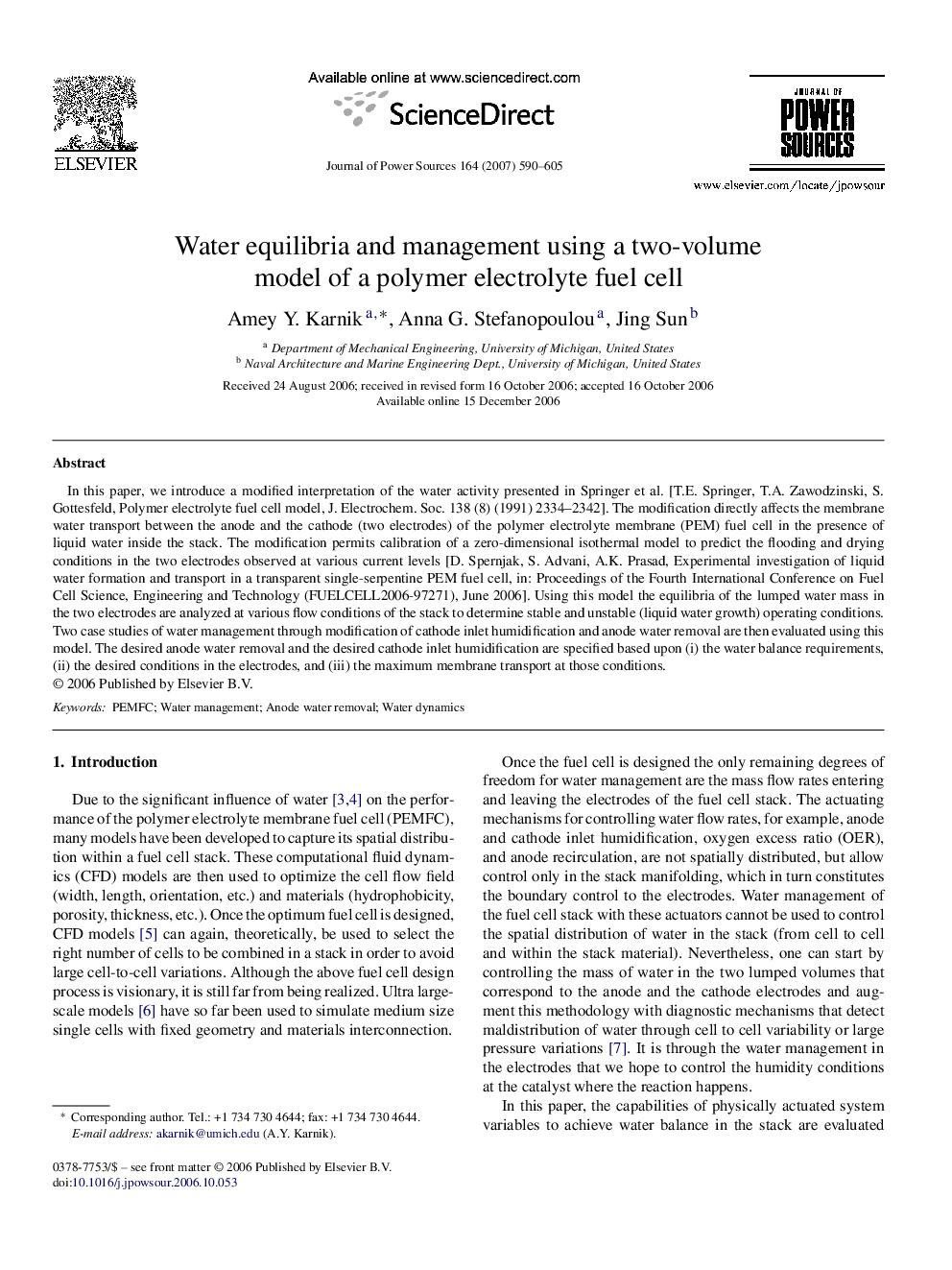| Article ID | Journal | Published Year | Pages | File Type |
|---|---|---|---|---|
| 1292135 | Journal of Power Sources | 2007 | 16 Pages |
In this paper, we introduce a modified interpretation of the water activity presented in Springer et al. [T.E. Springer, T.A. Zawodzinski, S. Gottesfeld, Polymer electrolyte fuel cell model, J. Electrochem. Soc. 138 (8) (1991) 2334–2342]. The modification directly affects the membrane water transport between the anode and the cathode (two electrodes) of the polymer electrolyte membrane (PEM) fuel cell in the presence of liquid water inside the stack. The modification permits calibration of a zero-dimensional isothermal model to predict the flooding and drying conditions in the two electrodes observed at various current levels [D. Spernjak, S. Advani, A.K. Prasad, Experimental investigation of liquid water formation and transport in a transparent single-serpentine PEM fuel cell, in: Proceedings of the Fourth International Conference on Fuel Cell Science, Engineering and Technology (FUELCELL2006-97271), June 2006]. Using this model the equilibria of the lumped water mass in the two electrodes are analyzed at various flow conditions of the stack to determine stable and unstable (liquid water growth) operating conditions. Two case studies of water management through modification of cathode inlet humidification and anode water removal are then evaluated using this model. The desired anode water removal and the desired cathode inlet humidification are specified based upon (i) the water balance requirements, (ii) the desired conditions in the electrodes, and (iii) the maximum membrane transport at those conditions.
